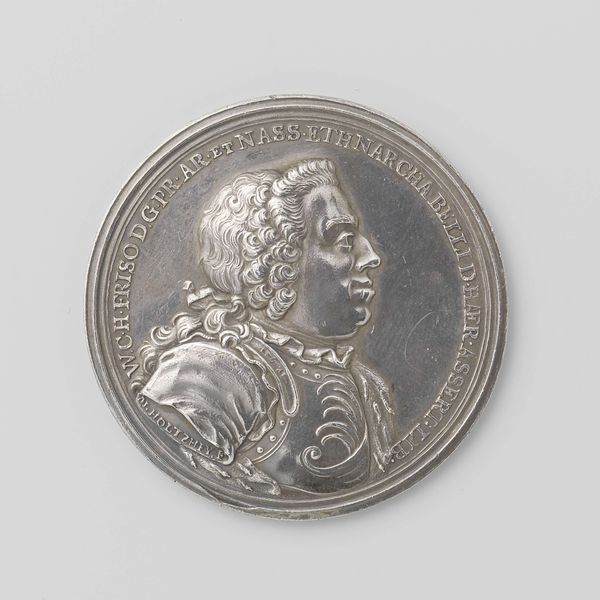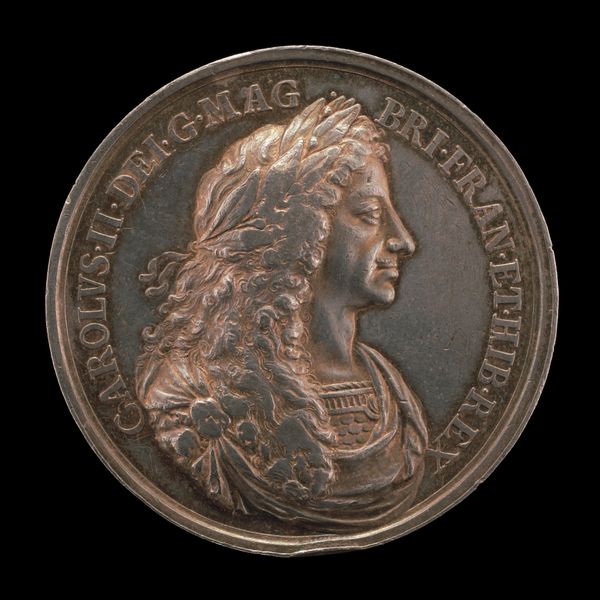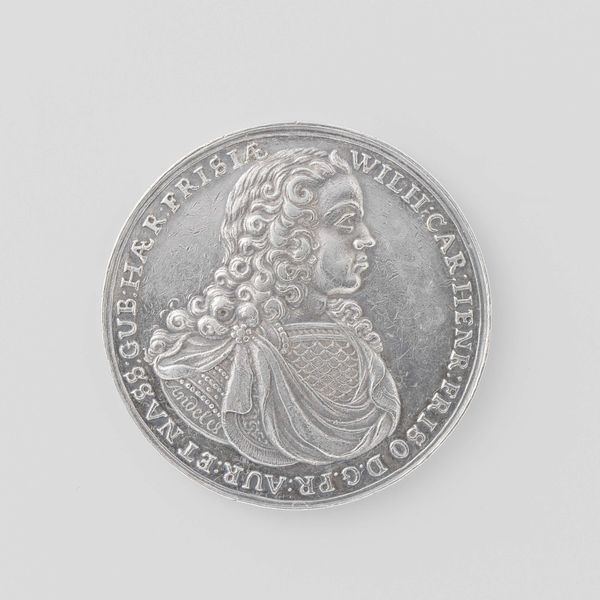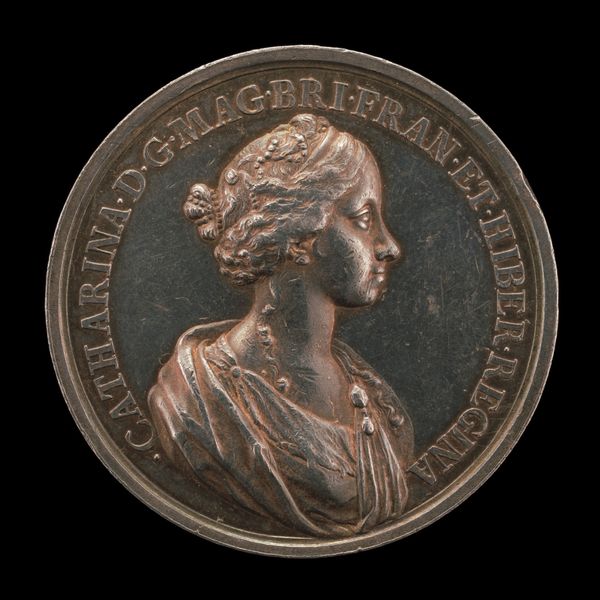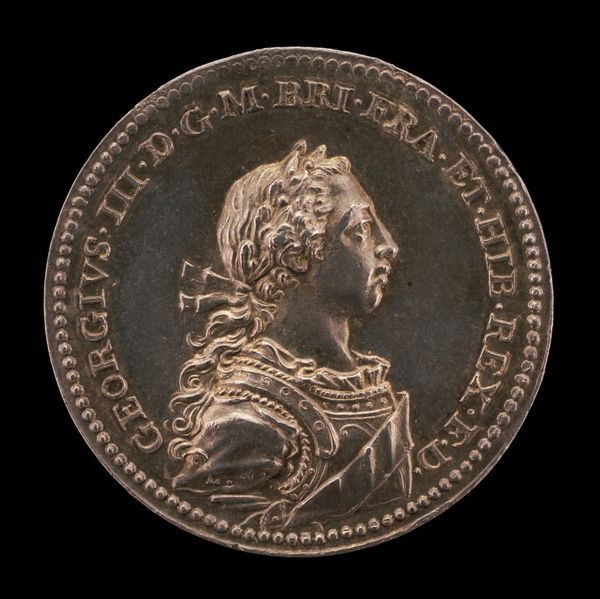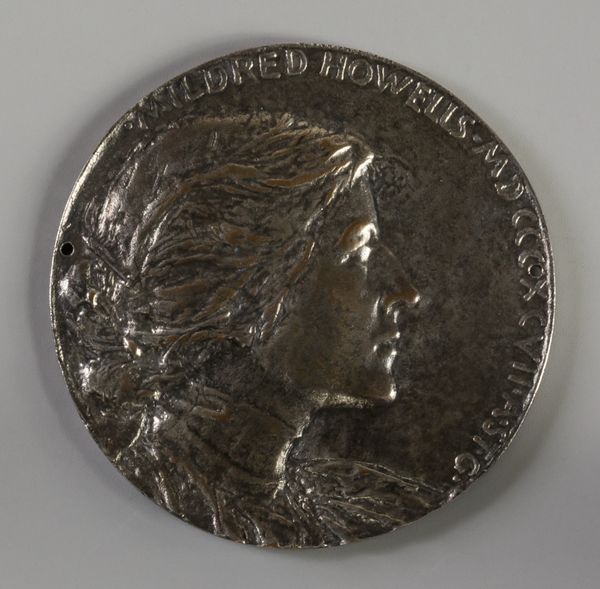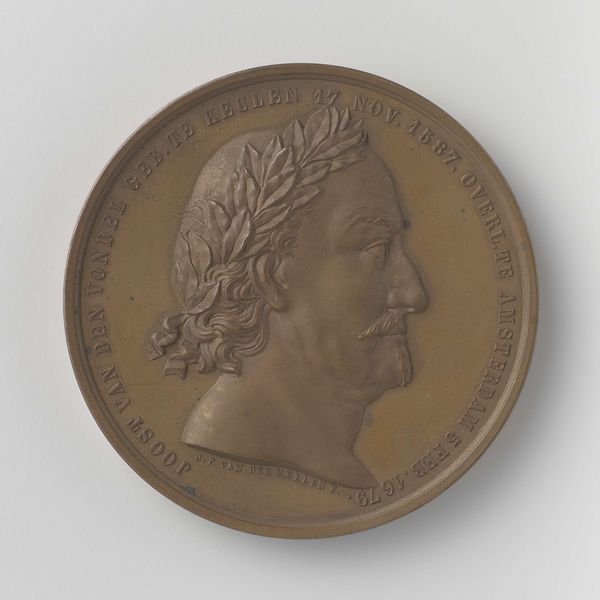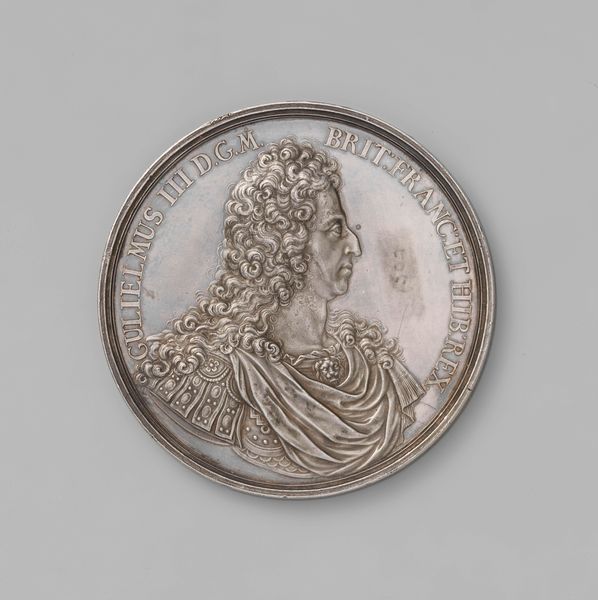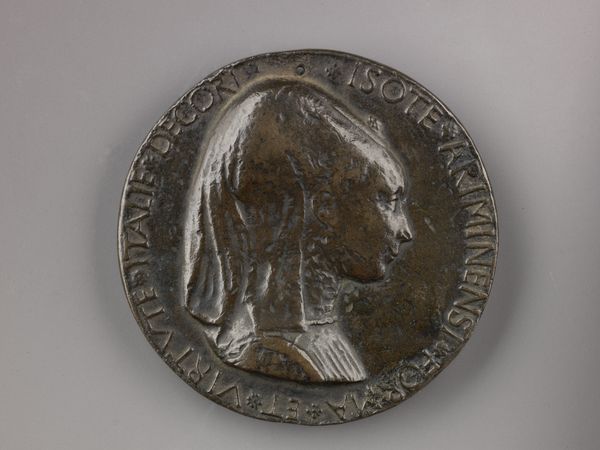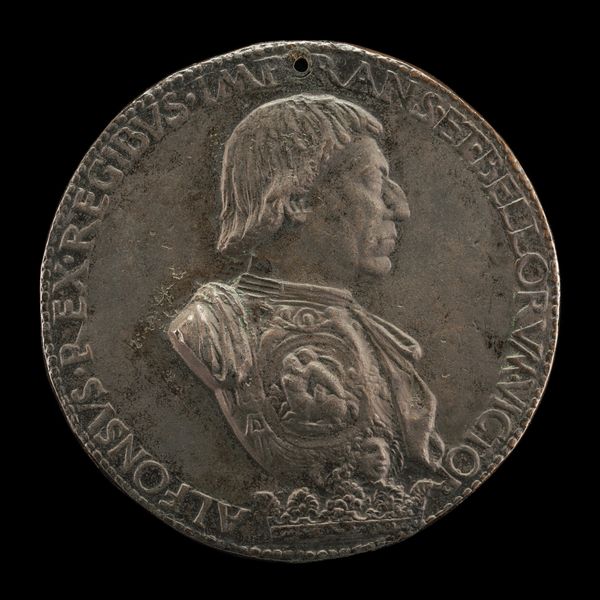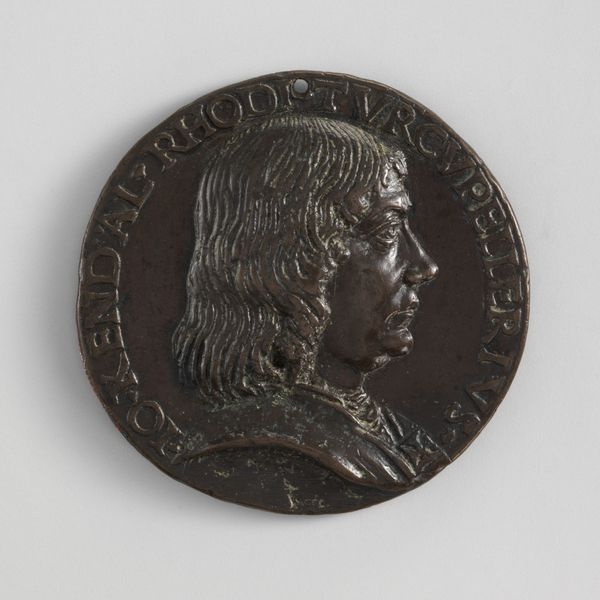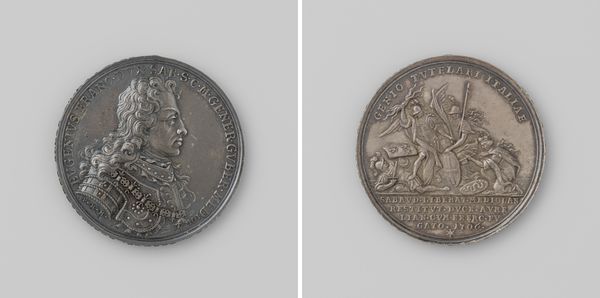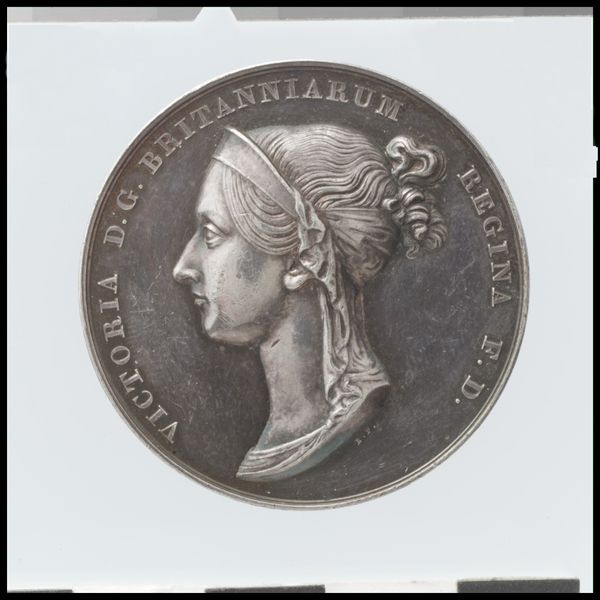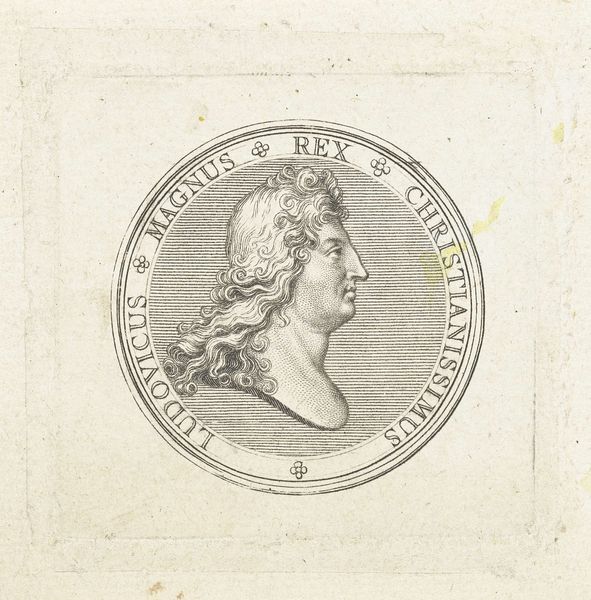
Verheffing van Willem Karel Hendrik Friso tot stadhouder van Gelderland en Zutphen 1722
0:00
0:00
metal, relief, sculpture
#
portrait
#
baroque
#
metal
#
relief
#
sculpture
Dimensions: diameter 6.3 cm, weight 145.3 gr
Copyright: Rijks Museum: Open Domain
Curator: Standing before us is "Verheffing van Willem Karel Hendrik Friso tot stadhouder van Gelderland en Zutphen," a metal relief crafted in 1722 by Bernard Picart. Editor: The chill silver, the almost photographic detail in the wig—it’s strikingly formal and reserved. Curator: This piece captures a pivotal moment in Dutch history: William IV's ascension. Given the historical context, metal, specifically silver, makes sense here as the material would have connoted value, importance, and power. Editor: Exactly. The choice of metal emphasizes its status as more than a mere image; it's a record, an official proclamation rendered in a durable, precious material. Look at the intricacy. It speaks volumes about the skills involved in producing such an object, particularly given the pressures around representation for political power. Curator: It does invite us to consider notions of inherited power. William's position, and the expectations placed upon him, are inscribed directly onto the medium itself. This act cemented his place in a line of succession as much as a visual portrait would. The detail, particularly in the wig, mirrors other artwork of the era, which emphasized Baroque aesthetic. Editor: Absolutely. And that act of replication becomes a deliberate social act, connecting Willem to pre-existing, and clearly-defined status categories and values. But considering it’s a relief, what’s your sense of its dissemination and use? Who did Picart and William intend to see this? Curator: Given the era and the detail rendered here, it’s more likely to have served as a token of prestige, circulating among elites invested in maintaining a particular sociopolitical structure rather than everyday commoners. Editor: It seems as if that tension, between displaying political power for all while making sure to give elites access to certain key markers of cultural and economic capital is key. What would it mean to re-materialize that power today? Curator: That's a complex question that gets to the heart of how we memorialize and understand figures of authority in a more egalitarian era. I think examining its initial reception offers insight. Editor: Agreed. Looking closely at the materials and methods here makes its relationship to historical, social, and even present political life more powerful.
Comments
No comments
Be the first to comment and join the conversation on the ultimate creative platform.
